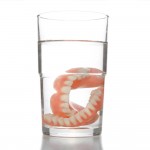
The United Nations estimates that Increasing life expectancy may result in the global population of people over 60 to reach 2 billion by 2050. The risk of tooth loss increases with age with partial edentulism being more common than complete edentulism. The global prevalence of edentulism varies between 3-21%. Treatment with complete or partial dentures involves multiple steps. The final impression procedure is one which is considered important for success as retention, stability, support, chewing efficiency, patient comfort, and overall satisfaction are considered to depend on this step for both complete and partial dentures. However, a wide range of materials and techniques are available for final impressions.
The aims of this review were to assess the effects of different final-impression techniques and materials used to
- make complete dentures, for retention, stability, comfort, and quality of life in completely edentulous people.
- make removable partial dentures, for stability, comfort, overextension, and quality of life in partially edentulous people.
Methods
Searches were conducted in the Cochrane Oral Health’s Trials Register, the Cochrane Central Register of Controlled Trials (CENTRAL), Medline, Embase, the US National Institutes of Health Trials Registry (ClinicalTrials.gov) and the World Health Organization International Clinical Trials Registry Platform databases with no restrictions on language or publication status. randomised controlled trials (RCTs) comparing different final-impression techniques and materials for treating people with complete dentures (CD) and removable partial dentures (RPD)were included. Standard Cochrane data collection and analysis methodology was followed.
Results
- 9 studies were included; 8 involving a total of 485 patients considered CD; 1 involving a total of 72 patients considered RPD.
- 6 of the CD studies were assessed to be at high risk of bias and 2 at low risk. The RPD studies was considered to be at high risk of bias.
- The overall quality of the evidence for each comparison and outcome was either low or very low, therefore, results should be interpreted with caution, as future research is likely to change the findings.
Complete Dentures
- 2 studies compared the same material and different techniques (one study contributed data to a secondary outcome only); 2 studies compared the same technique and different materials; and 4 studies compared different materials and techniques.
- There was low-quality evidence that silicone was a better final-impression material for oral health-related quality of life than alginate.
- There was very low-quality evidence of no clear differences between the single-stage impression alginate and the two stage- two step elastomer groups in participant-reported quality of life using OHIP-EDENT.
Removable partial dentures
- One study randomised 72 patients and compared altered-cast technique versus one-piece cast technique. The study did not measure quality of life but reported that most participants were satisfied with the dentures and there was no evidence of any clear difference between groups for general satisfaction at one-year follow-up (low-quality evidence).
Conclusions
The authors concluded: –
there is no clear evidence that one technique or material has a substantial advantage over another for making complete dentures and removable partial dentures. Available evidence for the relative benefits of different denture fabrication techniques and final-impression materials is limited and is of low or very low quality. More high-quality RCTs are required.
Comments
The background to this review provided a useful summary of the wide range of impression techniques and materials that are available for the construction of both CD and RPDs. The review itself is conducted following Cochrane’s rigorous methodological approach. Only a limited number of trials were found to address the reviews key question and the overall quality of evidence was considered to be low or very low. The authors highlight that a number of other narrative and qualitative review of CD impressions have been conducted. Other reviews (Dental Elf – 4th Apr 2016) has also suggested that single stage impression techniques can be equal to a two stage approach. Given the ageing population and their likely increase in patients requiring CD or RPD there is a need for more high-quality trials to provide better information in this area.
Links
Primary Paper
Jayaraman S, Singh BP, Ramanathan B, Pazhaniappan Pillai M, MacDonald L, Kirubakaran R. Final-impression techniques and materials for making complete and removable partial dentures. Cochrane Database of Systematic Reviews 2018, Issue 4. Art. No.: CD012256. DOI: 10.1002/14651858.CD012256.pub2. PubMed
Other references
Cochrane Oral Health Group Blog – More research is needed on the best techniques and materials for making dentures
Dental Elf – 8th Jul 2016
Dental Elf – 4th Apr 2016
Simplified complete denture fabrication can replace traditional approaches suggests review
